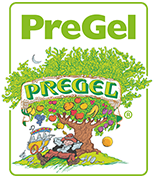Why it’s important to consider all ingredients in your recipe when making goods with dietary restrictions
Considering the dozens of today’s food labels that read gluten-free, vegan, kosher, and so forth, it may be hard for some people to believe that there was once no such thing as dietary restrictions on a mainstream level in the foodservice industry. Nowadays, it seems as if everywhere you look there are new diets or a new food allergy that keeps the consumer market cautious of what they are eating, and there’s a legitimate reason why.
The American diet today isn’t exactly the textbook definition of balanced meals or an appropriate division of grains, fats, etc. It consists of nearly 60% of consumed calories coming from what is known as ultra-processed food, according to a study published in the journal BMJ Open. Ultra-processed foods are defined as foods that contain ingredients such as flavors, colors, sweeteners and hydrogenated oils, emulsifiers, and other additives the common home cook wouldn’t normally have access to utilize. With this, the study also found that vegetables offer only 1% of the typical American’s daily calories. It’s with this information that we make a connection to why processed foods hurt our immune systems thus creating more allergies and dietary restrictions that we, as chefs, must pay attention to.
Today, there are many special diets on the market. In some cases, these diets are monopolized as a source of revenue for large corporations who may advertise certain products as “necessary” to be considered healthy. But when it comes down to making complete recipes exact to their certifications, whether they are vegan, gluten-free, or kosher, there are many simple considerations one should follow when choosing ingredients that will maintain the integrity of a true dietary-restrictive recipe.
It may seem like it would be complicated to swap or work around ingredients that do not coincide with a dietary restrictive recipe, but, in fact, most of the answers are more apparent than we realize. For instance, if you are looking to replace chocolate because you are on a vegan diet, look to carob powder instead. Carob is naturally sweet, low in fat, high in fiber, and offers calcium. The sweet, edible pulp from the carob tree is where we also get locust bean gum, a common thickener and gelling agent in industrial food manufacturing.
Another fantastic ingredient substitution for wheat flour in gluten-restricted diets is tapioca flour, which is derived from the cassava root. It is gluten-free, vegan, low in sugar, low in fat, and showcases natural elasticity, which is reminiscent to gluten in wheat flour. Perhaps one of the most underrated and most misunderstood alternative ingredients for vegan diets is that of the common egg. Most baked goods call for some form of eggs, from cookies to cakes. To substitute the place of one egg in most baking recipes use ¼ cup of unsweetened applesauce mixed with ½ teaspoon of baking powder. You can also blend 1 tablespoon of chia seeds with 1/3 cup of water, or use 3 tbsp of peanut butter to replace one egg.
Needless to say there are hundreds of easy life hacks when it comes to finding substitutions to keep recipes for dietary restrictive regimens pure. Remember, utilizing a vegan, gluten-free, or kosher ingredient for a specialized recipe is a great start as long as all other ingredients are also friendly to that specific dietary restriction.
